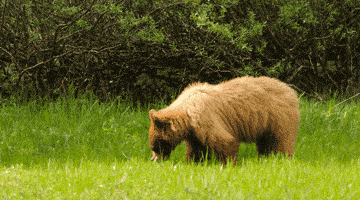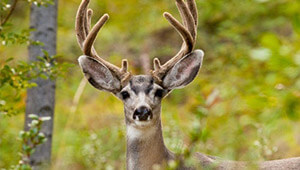Yosemite Valley is a fascinating ecosystem filled with hundreds of species of mammals, reptiles, birds, and fish. Let’s take a look at some of the wildlife you can expect to encounter at the park, and how to stay safe while taking in all the beauty around you.

The Big. It should come as no surprise that black bear sightings are fairly common around the valley. Approximately 300 to 500 of these majestic creatures live in Yosemite National Park and are most active at night or in the early morning. No matter how tempting it is to get a closer look, bears should be given a wide berth of at least 50 yards and never approached. To protect bears, always remember to use a bear-proof food locker when camping. Human food is unhealthy for bears and can change bears natural behavior. Help keep bears wild.
Visitors in the northeastern edge of the park may also catch a rare glimpse of the endangered Sierra Nevada bighorn sheep. Many wear GPS-equipped collars that track populations and allow scientists to monitor the health of the herd, as well as avoid encounters with domestic sheep populations. Sierra Nevada bighorn sheep are normally docile, but wild animals should never be approached in the park for any reason.

The Beautiful. While visiting Yosemite Valley, be sure to bring binoculars and a camera so you don’t miss the lovely animals of all shapes and sizes. Marmots, bobcats, songbirds, squirrels, rabbits, and dozens of species of butterflies can be spotted all over the park.
Keep an eye out for the mule deer, also called “black-tailed deer,” that congregate in open fields and meadows. Named for their disproportionately large ears, they’re likely to hear you coming before you see them. Mule deer typically forage for food at lower elevations during the winter, but can be found at higher elevations during the summer.
Hundreds of bird fanciers flock to the valley each year to watch feathered beauties forage for berries or organize their yearly migration travels. Peregrine falcons soar over the trees while great grey owls hoot to each other as the sun sets over the mountains. The area is so hospitable to the United States bird population that the American Bird Conservancy has designated Yosemite a Globally Important Bird Area.
Beware! One of the most important things to keep in mind when visiting Yosemite Valley is that approaching or feeding the animals — any animals — in the park is strictly prohibited. Aside from the inherent danger of getting to close to the wildlife, human interaction puts undue stress on the animals themselves. Feeding them can make them ill or diminish their ability to forage for natural food sources.
Take Care! Protect Yosemite’s wildlife by always driving the marked speed limit. Bears, deer and other wildlife are often killed by speeding cars
